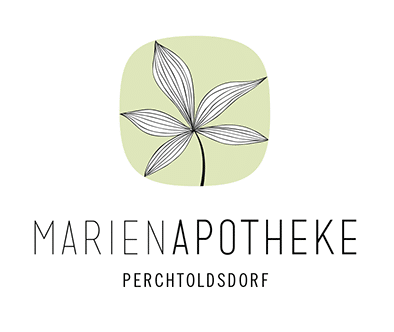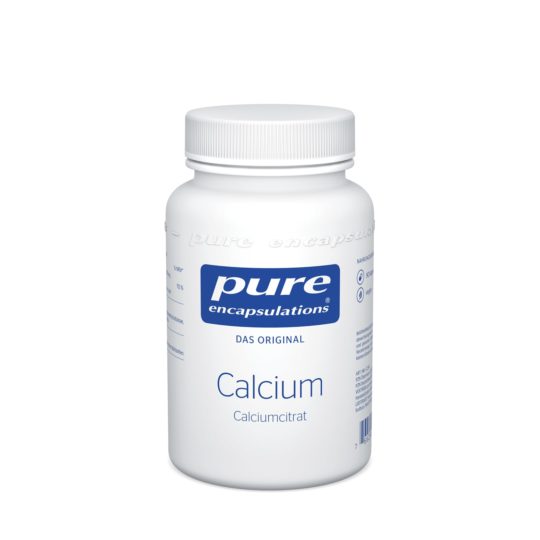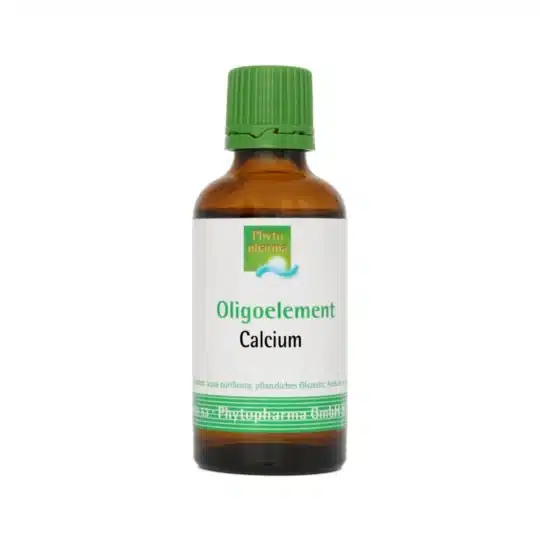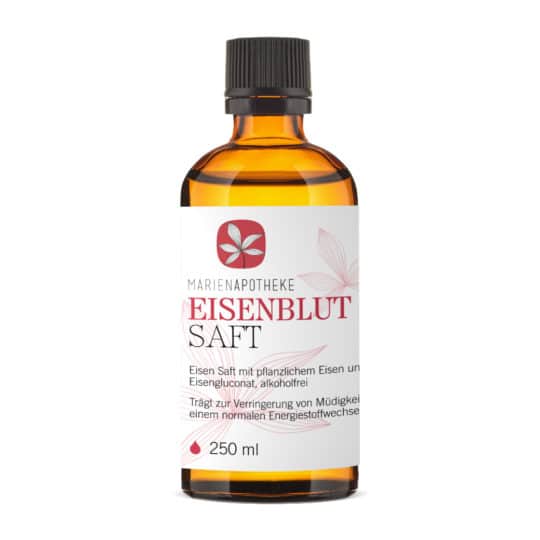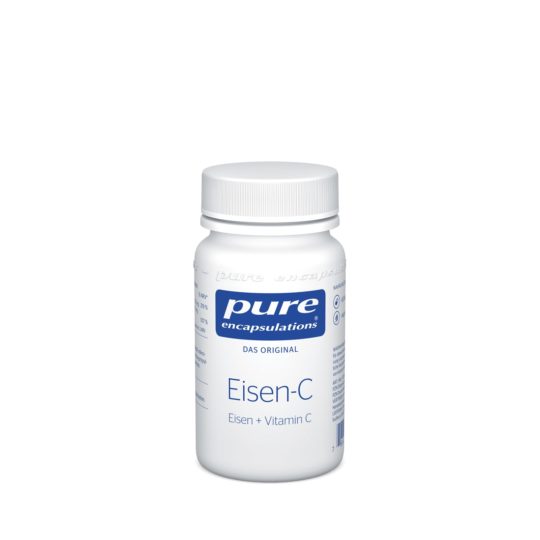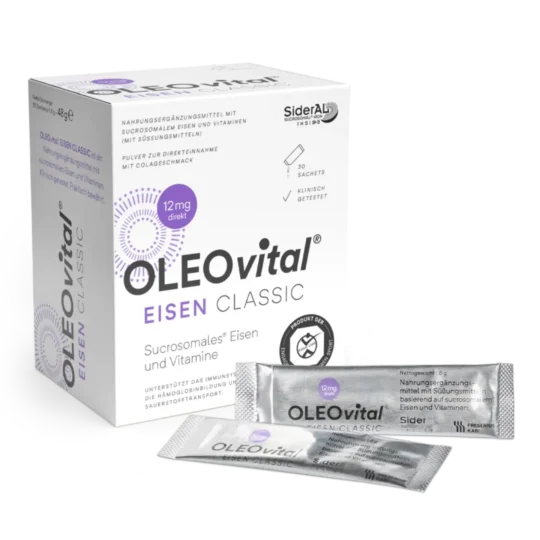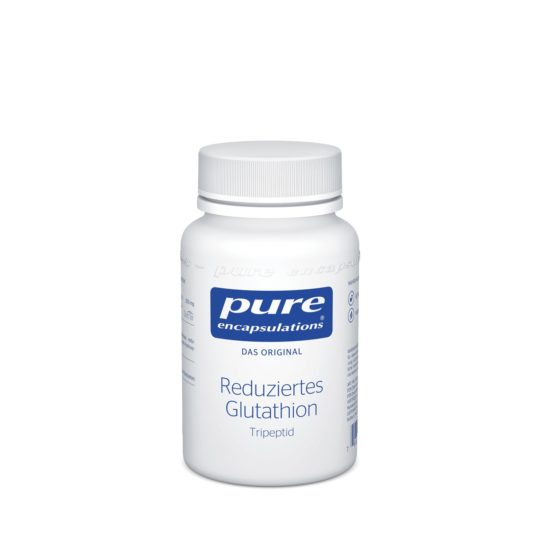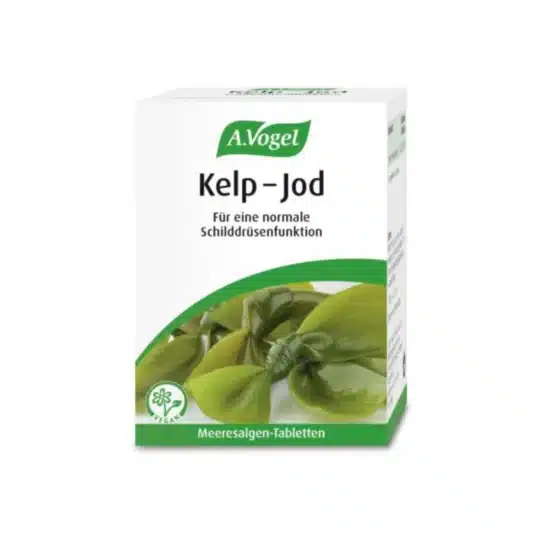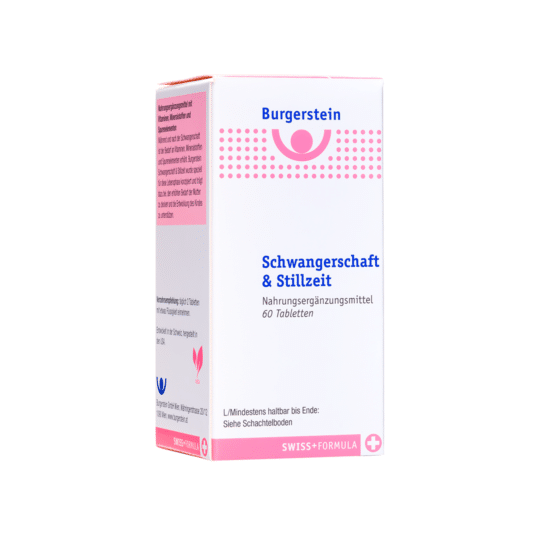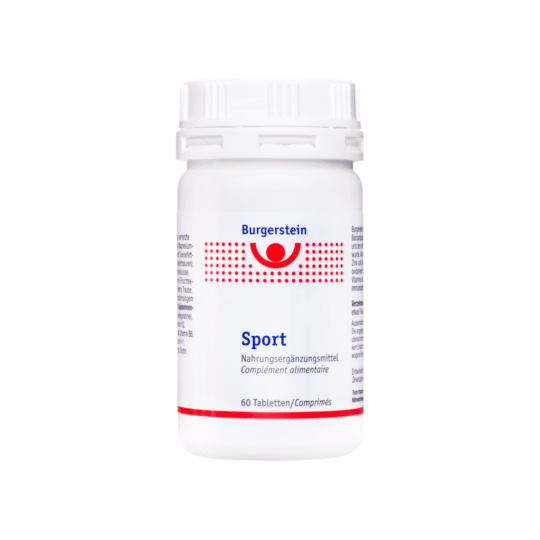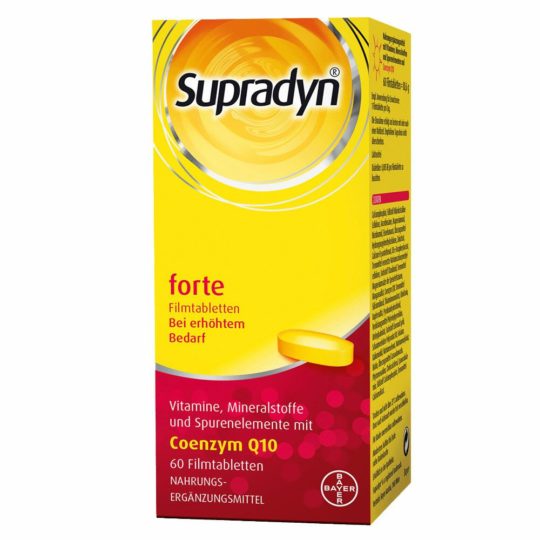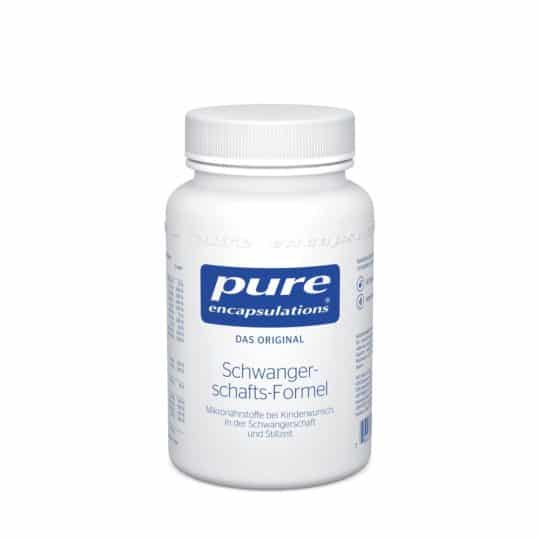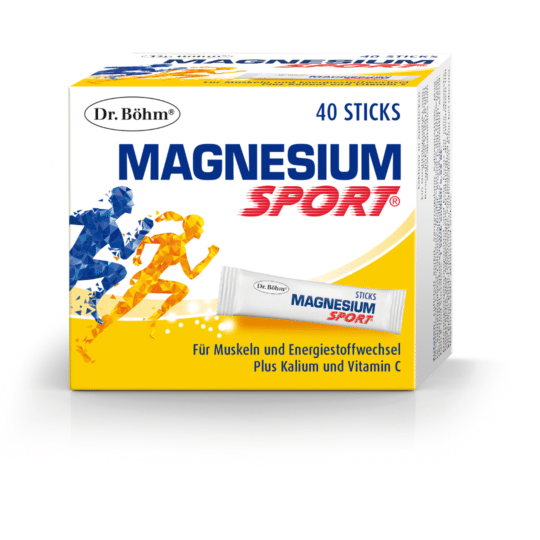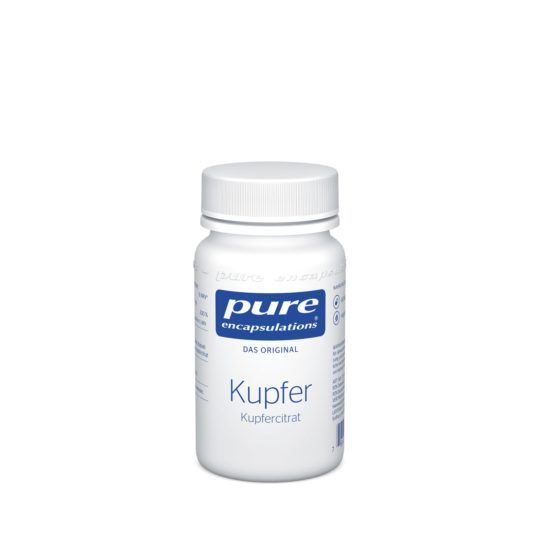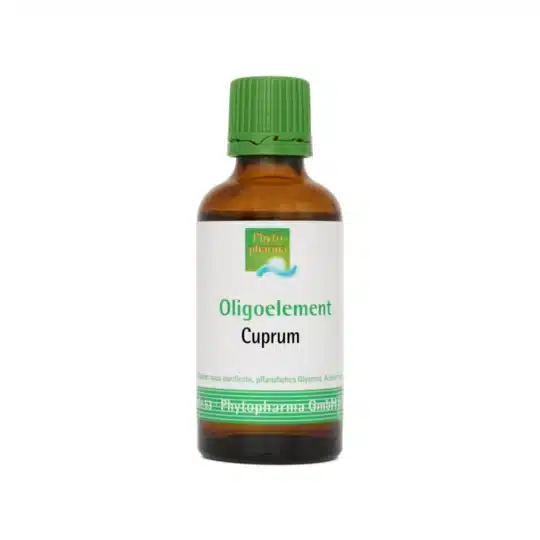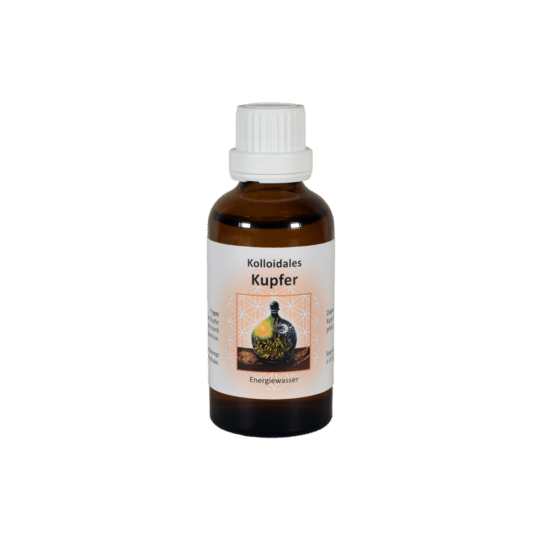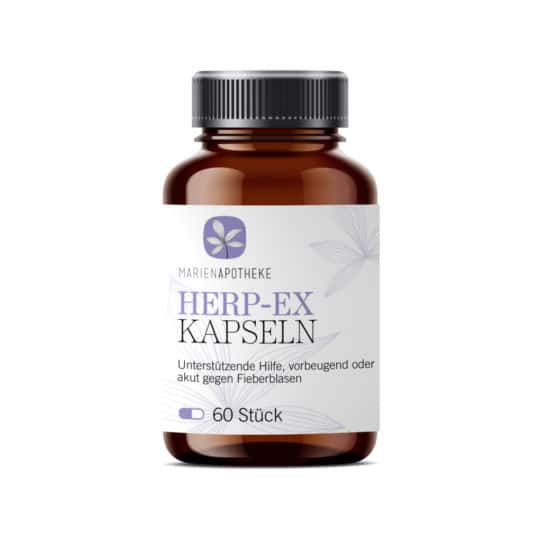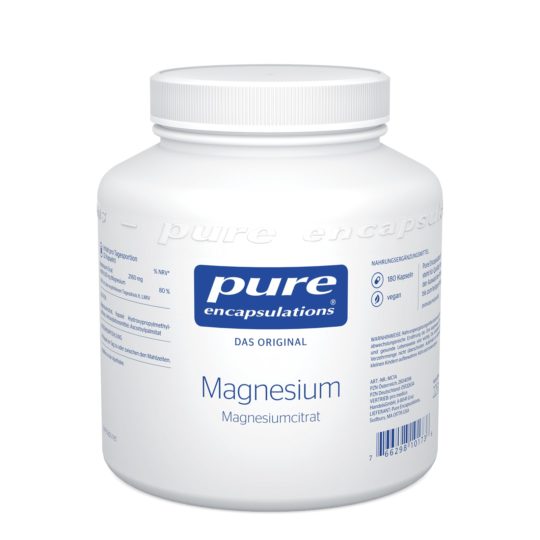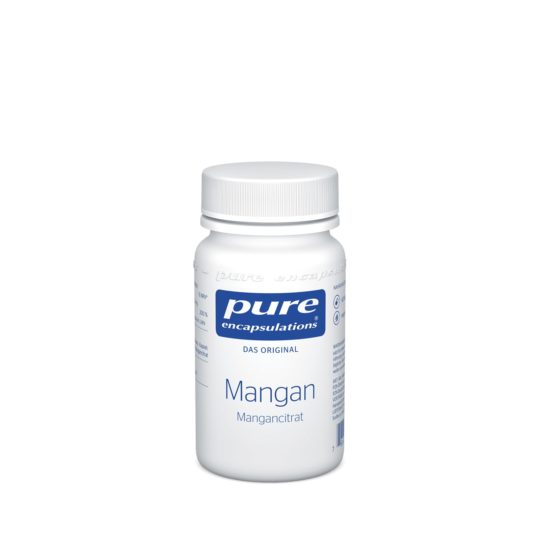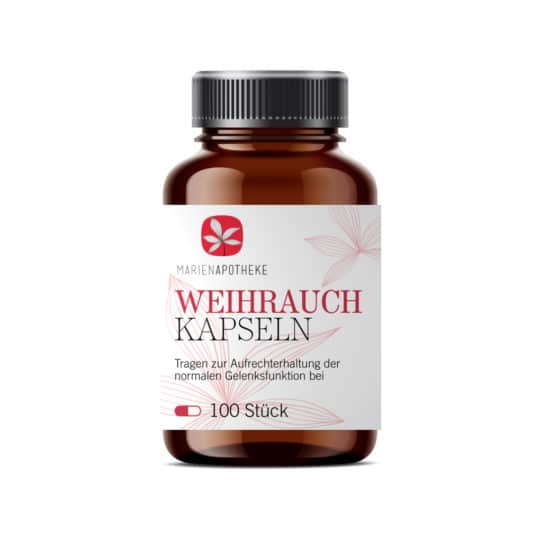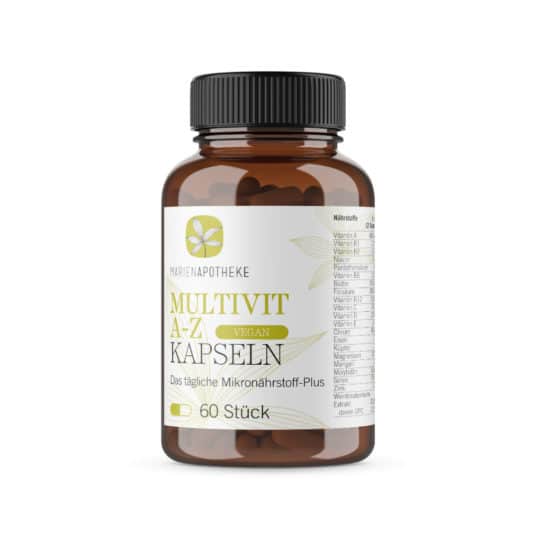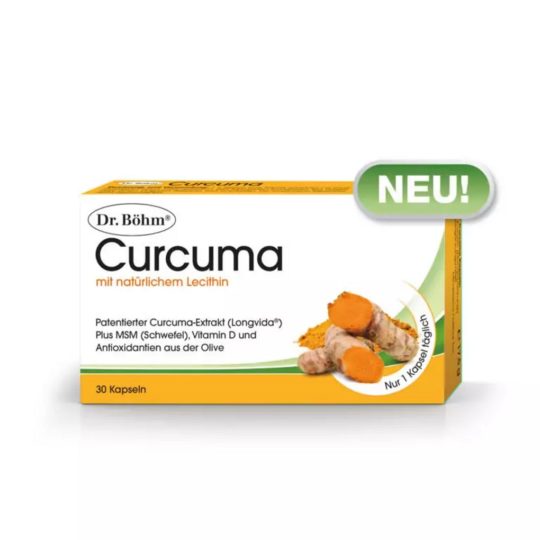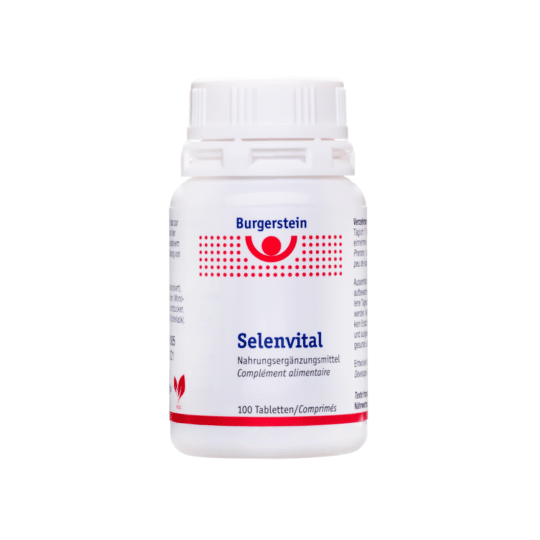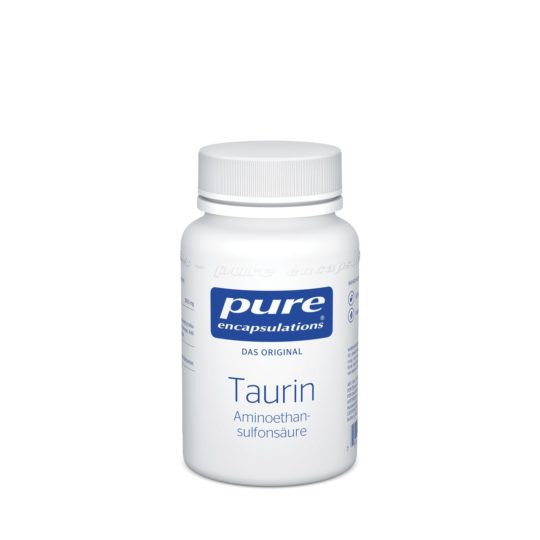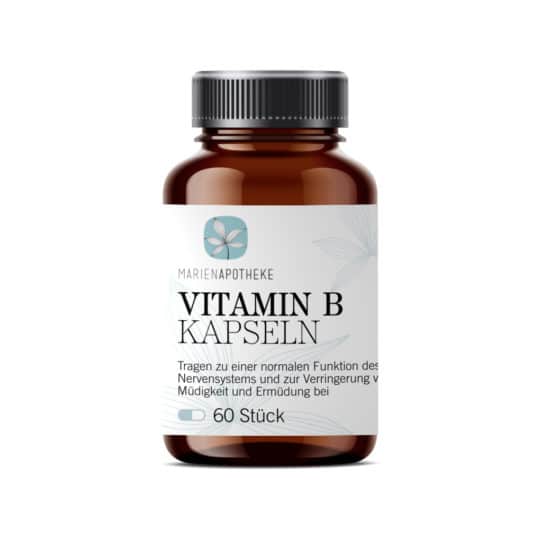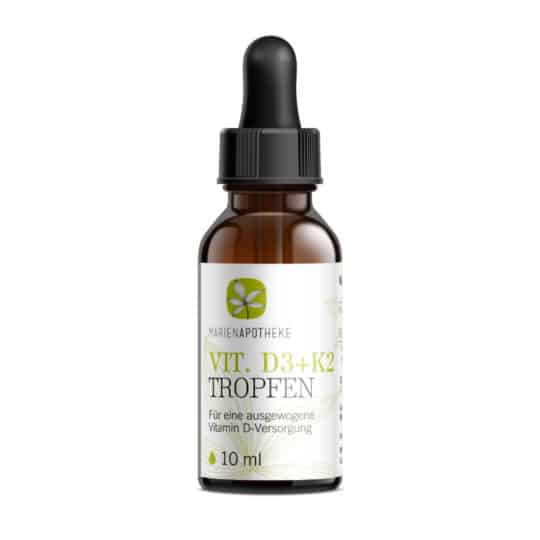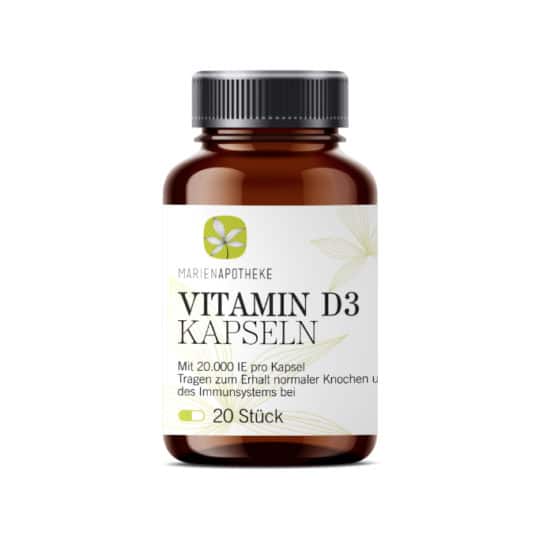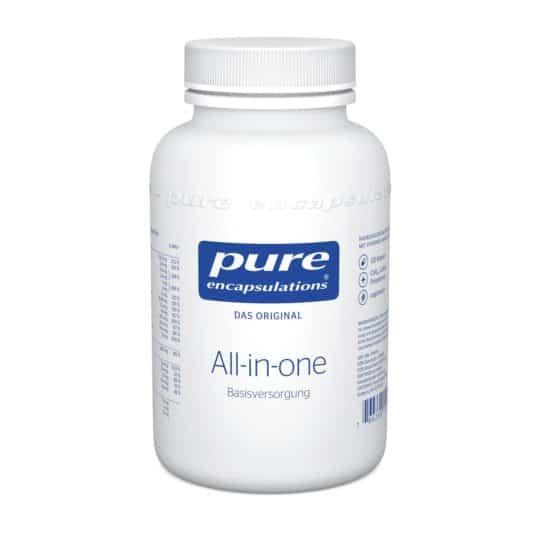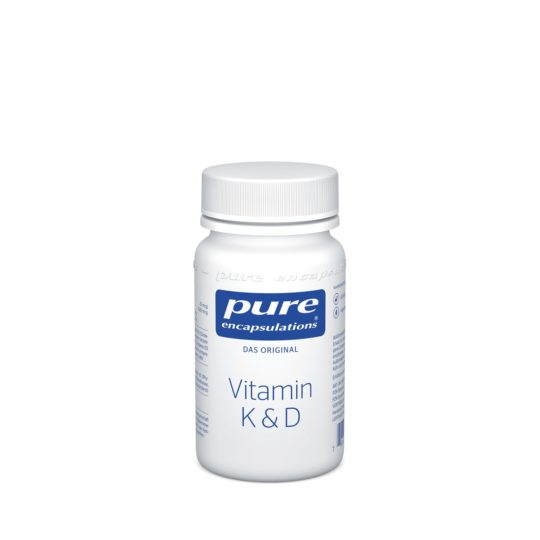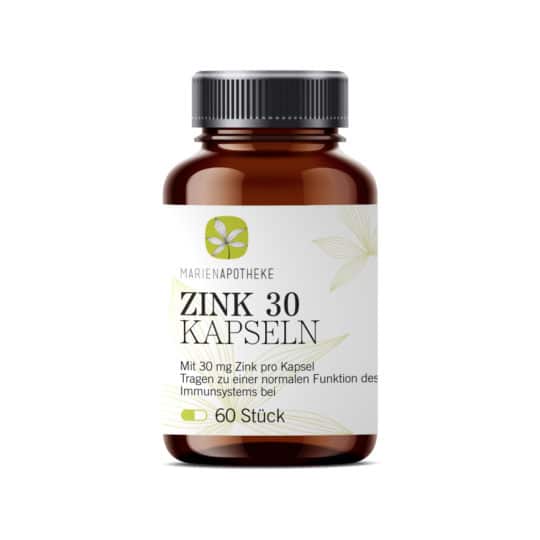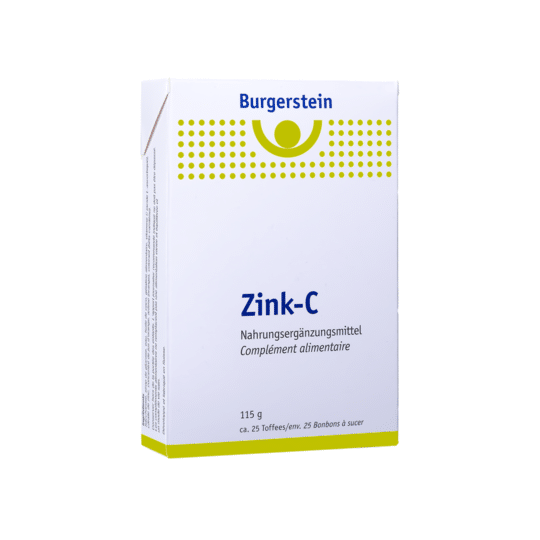Discover the world of vitamins and micronutrients in our micronutrient encyclopedia.
Micronutrients are vitamins and minerals that the human body needs in relatively small amounts, but they are essential for good health. These substances support a variety of physiological functions, including the immune system, nervous system and energy production.
Micronutrient deficiencies can lead to various health problems. As the body cannot produce these substances itself, they must be obtained from food or, in some cases, from dietary supplements.
Calcium is a vital mineral that is essential for the human body. It is known for its essential role in the formation and maintenance of strong bones and teeth.
Adequate calcium intake during childhood, adolescence and adulthood is essential for the development and maintenance of a healthy bone structure. Calcium is also required for the function of muscle and nerve cells and plays a role in blood clotting.
Calcium also supports heart muscle function and helps to maintain a normal heart rhythm. It can regulate blood pressure and reduce the risk of heart disease.
Calcium also plays a decisive role in the activation of enzymes that are involved in various metabolic processes. It is involved in the regulation of hormone balance and the release of messenger substances in the body.
Vitamin D ensures that calcium is absorbed from the intestine and incorporated into the bones.
A balanced diet with calcium-rich foods such as dairy products, green vegetables and nuts is usually sufficient to cover calcium requirements. However, in some cases, such as certain dietary habits, special phases of life such as pregnancy or breastfeeding or certain illnesses, a calcium supplement may be useful to cover the requirement
Biological functions
| Bones/Teeth |
|
| Musculature |
|
| Nervous system |
|
| Blood clotting |
|
| Cell function |
|
| Hormone balance |
|
Here are some foods that are rich in calcium:
-
Dairy products: Milk, cheese and yogurt are some of the best sources of calcium.
-
Leafy vegetables: Dark green leafy vegetables such as spinach, kale and broccoli also contain a good amount of calcium.
-
Fish: Fish such as sardines and salmon, especially when eaten with bones, are excellent sources of calcium.
-
Nuts and seeds: Almonds, sesame seeds and chia seeds are rich in calcium.
-
Pulses: Beans and lentils also contain a good amount of calcium.
-
Cereals: Some cereals and bread are enriched with calcium.
Interactions with medicines:
Antacids1,2
The absorption and utilization of calcium, especially from food, decreases. As a result, calcium levels also fall. Therefore, make sure you have a sufficient supply of calcium - especially for senior citizens.
Antibiotics (tetracyclines, cefalosporins, gyrase inhibitors)1,2
Reduced absorption and bioavailability due to complex formation. Reduction in antibiotic efficacy. Ensure an interval of > 3 hours between doses. Exception moxifloxacin: 6 hours between doses.
Antiepileptic drugs1,2
Impair calcium absorption and increase calcium excretion due to the increased need for vitamin D. Therefore, ensure an adequate supply of calcium and vitamin D.
Bisphosphonates1,2
Resorption and bioavailability of calcium decrease due to complex formation. At the same time, the bisphosphonate effect is reduced. Keep an intake interval of > 2 hours.
Calcium channel blockers1,2
Simultaneous intake of calcium reduces the antihypertensive and vasodilatory effect of the drug (decrease in the effectiveness of the drugs). Check the antihypertensive effect by regularly measuring blood pressure.
Diuretics (thiazides, loop diuretics)1,2
Thiazides lead to a reduction in urinary calcium excretion. Serum calcium levels should be monitored regularly. Loop diuretics promote the renal excretion of calcium.
Glucocorticoids1,2
Excretion of calcium via the kidneys increases. Absorption of calcium via the intestine decreases. The activity of bone-degrading cells increases, while that of bone-building cells decreases. Calcium levels fall. Long-term therapy: ensure adequate supply of calcium and vitamin D.
Cardiac glycosides1,2
Toxicity of cardiac glycosides may be increased in hypercalcemia as a result of treatment with calcium. Monitor ECG and serum calcium levels.
L-thyroxine1,2
Absorption and bioavailability decrease due to complex formation. Decrease in the effectiveness of L-thyroxine. Take 1-2 hours apart.
Sources
- Gröber U.; Drugs and micronutrients - Medication-oriented supplementation; Wissenschaftliche Verlagsgesellschaft MbH 2018; Ed. 4
- Gröber U.; Metabolic Tuning - Prevention - Therapy; Wissenschaftliche Verlagsgesellschaft 2011; Ed. 3
Coenzyme Q10, also known as ubiquinone, is a natural substance found in our cells that plays a crucial role in energy production. As a vital component of the respiratory chain in the mitochondria, coenzyme Q10 promotes the conversion of nutrients into adenosine triphosphate (ATP), the energy source for our cells.
In terms of health, coenzyme Q10 has a number of positive effects. It is considered a powerful antioxidant and can help protect cells from harmful free radicals. In addition, it is often used as a dietary supplement to improve energy metabolism and promote overall vitality.
Especially for people who take certain medications such as statins, which can lower coenzyme Q10 levels, an additional intake may be useful. Studies have shown that coenzyme Q10 can also have positive effects on the cardiovascular system by supporting blood circulation and regulating blood pressure
Biological functions:
| Energy generation | Ubiquinones are the most important electron carriers in the respiratory chain
|
| lipophilic antioxidant | Coenzyme Q10 can remove free radicals in the form of hydroquinone in membranes.
|
| Immunocompetence |
|
| Cell membrane stabilization and integrity |
Control of ion channels and increase in membrane fluidity
|
It is contained in many foods, especially in:
-
Offal: The heart, liver and kidneys are particularly rich in CoQ10.
-
Meat: Beef, pork and chicken contain high amounts of CoQ10.
-
Fish: Oily fish such as salmon, mackerel and tuna are excellent sources of CoQ10.
-
Nuts and seeds: Pistachios, sesame seeds, peanuts and hazelnuts also contain CoQ10.
-
Oils: Soybean oil and olive oil are good sources of CoQ10.
-
Fruit and vegetables: Broccoli, cauliflower, oranges and strawberries contain moderate amounts of CoQ10.
Interactions with medicines:
Statins (e.g. e.g. simvastatin, fluvastatin)1
The use of statins not only blocks the synthesis of cholesterol, but also the body's own synthesis of coenzyme Q10. It is therefore important to ensure a sufficient supply of coenzyme Q10 during treatment with statins.
Anthracyclines (e.g. e.g. doxorubicin)1
Animal and human studies have shown that the administration of coenzyme Q10 can lead to a reduction in the cardiotoxic effect of anthracyclines.
Antiparkinsonian drugs (e.g. e.g. L-Dopa)1
Supplementation of coenzyme Q10 can significantly improve Parkinson's symptoms. Supplementation should be started immediately after diagnosis.
Anticoagulants1
Due to the structural similarity between coenzyme Q10 and vitamin K, the efficacy of vitamin K antagonists (e.g. warfarin, Marcoumar®) may be impaired if higher amounts of coenzyme Q10 are supplemented. Close monitoring of INR values is therefore advisable.
Beta-blockers (e.g. e.g. metoprolol)1
According to the scientific literature, coenzyme Q10 can improve the effectiveness of beta-blockers.
Tricyclic antidepressants and neuroleptics1
Both tricyclic antidepressants and neuroleptics such as chlorpromazine can lead to a reduction in coenzyme Q10 levels. In order to counteract drug-induced mitochondrial disorders, attention should be paid to supplementation with coenzyme Q10.
Oral antidiabetics (sulfonylureas)1
Therapy with sulphonylureas can affect the coenzyme Q10 level. It is therefore advisable to ensure an adequate supply of coenzyme Q10. In general, diabetics should be well supplied with mitotropic micronutrients.
Sources
- Gröber U.; Drugs and Micronutrients - Medication-oriented Supplementation; Wissenschaftliche Verlagsgesellschaft MbH 2018; Ed. 4
Iron is a vital trace element that plays a crucial role in the human body. It is primarily known for its function in the formation of haemoglobin, the red blood pigment responsible for transporting oxygen in the blood.
Sufficient iron intake is essential to prevent anemia. Iron deficiency anemia can lead to tiredness, weakness and difficulty concentrating. Iron supports the production of red blood cells and thus enables efficient oxygen transport to the cells and tissues in the body.
Iron is also involved in various enzymatic reactions in metabolism, including energy metabolism and DNA synthesis. It plays a role in immune function and can strengthen the body's defenses.
As a rule, iron is absorbed through a balanced diet. It occurs in two forms: Heme iron, which is mainly found in animal foods such as meat and fish, and non-heme iron, which is found in plant foods such as legumes, nuts, whole grains and green leafy vegetables.
Certain groups of people, such as pregnant women, breastfeeding mothers, growing children and women of childbearing age, have an increased iron requirement and could benefit from iron supplementation
Biological functions:
| Hemoglobin | Component of hemoglobin, the red blood pigment of erythrocytes
|
| Myoglobin | Component of myoglobin, the oxygen-binding protein of muscle cells
|
| Cellular energy recovery |
Component of the cytochromes of the respiratory chain
|
| Component of the antioxidant system |
|
| non-heme-containing enzymes | Fe-metallo-enzymes (dioxygenases, monooxygenases) catalyze hydroxylation reactions in the biosynthesis of:
|
| Metabolism of xenobiotics |
|
| DNA synthesis |
|
| Fatty acid synthesis |
|
| Endothelial function |
|
Here are some foods that are rich in iron:
-
Meat and poultry: Beef, lamb, pork and poultry are excellent sources of heme iron, which is easily absorbed by the body.
-
Fish and seafood: Fish and seafood, especially oysters, mussels and sardines, are also rich in heme iron.
-
Legumes: Beans, lentils, chickpeas and soybeans contain a good amount of non-heme iron, which is less easily absorbed by the body than heme iron.
-
Nuts and seeds: Almonds, pine nuts, cashews and sesame seeds are good sources of non-heme iron.
-
Whole grain products: Whole grain bread, brown rice and whole grain pasta also contain non-heme iron.
-
Dark green leafy vegetables: spinach, kale and Swiss chard are rich in non-heme iron.
-
Dried fruit: Raisins, apricots and figs are also good sources of non-heme iron.
Interactions of iron with medicines:
Antacids (aluminum-containing antacids, PPI, H2 antagonists)1-4
These affect the absorption and release of iron (plant-based non-heme iron), as stomach acid is essential for this.
Salicylates & NSAR1-4
Hidden microbleeds can promote iron loss.
Doxycycline & gyrase inhibitors 1-4
Complex formation of iron with the antibiotic
Carbidopa & L-Dopa1-4
Complex formation between L-dopa and iron
Bisphosphonates1-4
Formation of mineral bisphosphonate complexes
L-thyroxine1-4
Formation of a complex between iron and the thyroid hormone L-thyroxine
Oestrogens1-4
increased iron serum levels due to estrogens and oral contraceptives.
Allopurinol1-4
Allopurinol can increase iron stores in the liver and should not be taken in combination with iron supplements.
Sources
- Biesalski H.K.; Vitamins, Trace Elements and Minerals - Indication, Diagnostics, Therapy; George Thieme Verlag 2019; 2nd ed.
- Elmadfa I.; Dietetics; Eugen Ulmer KG 2015; Ed. 3
- Gröber U.; Metabolic Tuning - Prevention - Therapy; Wissenschaftliche Verlagsgesellschaft 2011; Ed. 3
- Gröber U.; Drugs and micronutrients; Wissenschaftliche Vertragsgesellschaft MbH 2018; ed. 4
EPA (eicosapentaenoic acid) and DHA (docosahexaenoic acid) are omega-3 fatty acids that are essential for the health of the human body. They are often referred to as "marine omega-3 fatty acids" as they are mainly found in fatty fish such as salmon, herring and mackerel.
EPA and DHA play a crucial role in promoting cardiovascular health. They can help regulate blood pressure and triglyceride levels, reduce inflammation and improve blood vessel function. Through these effects, they can reduce the risk of heart disease and stroke.
EPA and DHA also have positive effects on the brain and cognitive function. They are important components of cell membranes in the brain and support the transmission of signals between nerve cells. This can help to improve mental clarity and concentration and reduce the risk of age-related memory loss.
EPA and DHA also have anti-inflammatory properties that can help relieve joint pain and inflammatory conditions such as rheumatism.
As the body cannot produce sufficient EPA and DHA itself, it is important to obtain them through diet or supplements, especially if the consumption of fatty fish is limited or if there is a specific health condition.
Biological functions
| Cell membranes | responsible for the fluidity and permeability of cell membranes |
| Blood vessels | Reduction
Increase
|
| Cardiovascular system | Positive effect on the cardiovascular system due to antiarrhythmic and antithrombotic effects |
| Fat metabolism | Reduction
Increase
|
| Blood pressure | Reduction
|
| Nervous system and neurotransmitter balance3 |
|
Here are some foods that are rich in EPA and DHA:
-
Fatty fish: Salmon, mackerel, tuna, herring and sardines are particularly rich in EPA and DHA.
-
Seafood: Oysters, shrimps and mussels also contain EPA and DHA, albeit in smaller quantities.
-
Algae and algae oil: Certain types of algae are rich in DHA and may also contain small amounts of EPA. Algae oil is a good vegan source of EPA and DHA.
-
Omega-3 enriched foods: Some foods, such as eggs, milk and yogurt, may be enriched with omega-3 fatty acids
Interactions with medicines
Blood thinners1-4
The effect of oral anticoagulants of the dicoumarol type (e.g. Marcoumar®) can be enhanced by the daily use of 1-2 g omega-3 fatty acids. When using omega-3 fatty acids and concomitant therapy with vitamin K antagonists, INR values should be monitored more closely.
For safety reasons, the doctor treating you should be consulted before using omega-3 fatty acids during therapy with blood thinners.
Methylphenidate1,2
The effectiveness of methylphenidate can be improved by the use of omega-3 fatty acids.
Statins1,2
Omega-3 fatty acids are used in addition to statin therapies, as they have triglyceride-lowering effects, among other things.
Analgesics (e.g. ibuprofen, diclofenac etc.)1,2
Due to the anti-inflammatory effects of omega-3 fatty acids, the amount of analgesics administered can be reduced.
Sources
- Gröber U.; Drugs and micronutrients; Wissenschaftliche Vertragsgesellschaft MbH 2018; ed. 4
- Gröber U.; Metabolic Tuning - Prevention - Therapy; Wissenschaftliche Verlagsgesellschaft 2011; Ed. 3
- Buckley M.S., et al; Fish Oil Interaction with Warfarin; Annals of Pharmacotherapy 2004; 38(1): 50-53.
- Bfr; The BfR recommends setting maximum levels for the fortification of foods with omega-3 fatty acids - BfR Statement No. 030/2009 of May 26, 2009
Reduced glutathione, also known as GSH, is an endogenous substance and a powerful antioxidant found in every cell of our body. It plays a crucial role in the detoxification of free radicals and other harmful substances produced in the body.
As an antioxidant, reduced glutathione protects the cells from oxidative stress and thus prevents cell damage. It neutralizes free radicals that can be caused by various factors such as environmental pollution, UV radiation, smoking and an unhealthy diet.
In addition, reduced glutathione is involved in the regeneration and protection of other antioxidants, such as vitamin C and vitamin E, which increases their effectiveness.
Reduced glutathione also supports the immune system by stimulating the activity of immune cells and thus improving the body's defense functions against pathogens and infections.
Adequate glutathione levels are important for health and can be promoted with a balanced diet rich in glutathione precursors such as sulphur-containing vegetables, pulses, garlic and onions.
In some cases, such as certain diseases or in connection with increased oxidative stress, supplementation with reduced glutathione may be useful to support glutathione levels
Glutathione is a powerful antioxidant compound found in many foods, especially in:
-
Fruit and vegetables: avocados, spinach, broccoli, garlic, onions, tomatoes and peppers are rich in glutathione.
-
Meat: Beef, chicken and fish contain high amounts of glutathione.
-
Nuts and seeds: Walnuts and flax seeds are good sources of glutathione.
Hyaluronic acid is a molecule that occurs naturally in the body's skin, joints and other tissues. Its main function is to retain moisture and keep the skin firm, supple and well moisturized.
As an essential component of connective tissue, hyaluronic acid ensures a healthy skin structure by providing an optimal environment for cells to produce collagen and elastin. This helps to reduce the appearance of wrinkles and fine lines and give the skin a youthful appearance.
Hyaluronic acid is also known for its anti-inflammatory properties and can help relieve joint pain and inflammation. It forms a protective layer around the joints and helps to improve their mobility and alleviate discomfort, especially in cases of osteoarthritis.
An ingredient in many skin care products and joint supplements, hyaluronic acid is available in various forms, including creams, serums, gels and injectables. Its use can moisturize the skin, improve joint mobility and support joint health
Hyaluronic acid is found in some foods that can help support the body's own production. Here are some examples:
-
Bone broth: Bone broth is rich in hyaluronic acid and can help to hydrate the skin and lubricate the joints.
-
Root vegetables: Potatoes and sweet potatoes contain hyaluronic acid.
Iodine is a vital trace element that is essential for thyroid function and the production of thyroid hormones. These hormones are of great importance for the regulation of metabolism, energy metabolism and growth throughout the body.
An adequate supply of iodine is crucial for the health of the thyroid gland. Iodine deficiency can lead to thyroid disorders, such as enlargement of the thyroid gland (goitre) or hypothyroidism, which can be accompanied by fatigue, weight gain and other symptoms.
Iodine is particularly important during pregnancy and breastfeeding, as it is responsible for the healthy development of the unborn child's brain and nervous system.
The main source of iodine in the diet is iodized table salt. It is also found in smaller amounts in sea fish, seafood, dairy products and some vegetables.
In some regions with iodine deficiency, iodine supplementation can be useful to cover the requirement and prevent deficiency symptoms
Iodine is found in a variety of foods, especially seafood and dairy products.
Here are some examples:
-
Sea fish: Fish such as cod, haddock and tuna are rich in iodine.
-
Seafood: Shrimps, mussels and other seafood also contain high amounts of iodine.
-
Dairy products: Milk and dairy products such as yogurt and cheese are good sources of iodine.
-
Eggs: Eggs also contain iodine, especially the yolk.
-
Iodized salt: In many countries, iodine is added to table salt to prevent iodine deficiency.
-
Algae: Algae, especially brown algae such as kombu, wakame and nori, are extremely rich in iodine.
Potassium is a vital mineral that is essential for numerous functions in the human body. It plays a central role in maintaining the electrolyte balance, which in turn is essential for the functioning of muscles, nerves and the heart.
Potassium is particularly well known for its role in regulating blood pressure. It helps to eliminate excess sodium from the body, which can lower blood pressure. Adequate potassium intake can therefore help to reduce the risk of high blood pressure and associated cardiovascular diseases.
Potassium is also important for muscle contraction and relaxation. It supports the normal function of muscles, including the heart muscle. An adequate supply of potassium can help prevent muscle cramps and weakness.
A balanced diet with potassium-rich foods such as bananas, oranges, potatoes, spinach and pulses is usually sufficient to cover potassium requirements. In some cases, however, a potassium deficiency can occur, e.g. with certain illnesses or when taking certain medications. In such situations, it may be useful to take potassium supplements to cover the requirement.
Here are some foods that are rich in potassium:
-
Fruit: Bananas, oranges, apricots and kiwis are rich in potassium.
-
Vegetables: Potatoes, sweet potatoes, tomatoes, spinach and broccoli contain high amounts of potassium.
-
Pulses: Beans, lentils and chickpeas are excellent sources of potassium.
-
Nuts and seeds: Almonds, walnuts and sunflower seeds also contain a good amount of potassium.
-
Dairy products: Milk and yogurt are good sources of potassium.
-
Fish: Salmon, tuna and mackerel contain high amounts of potassium.
Copper is an essential trace element that plays an important role in the health of the human body. It is involved in various enzymatic reactions and fulfills numerous functions in the metabolism and in the formation of connective tissue.
One of the most important features of copper is its importance in the formation of hemoglobin, the red blood pigment that transports oxygen in the blood. It also supports the absorption of iron in the intestine, which can help prevent anemia.
Copper plays a crucial role in the formation of collagen, a structural protein that is essential for the health of skin, cartilage, bones and blood vessels. It promotes the formation of connective tissue and can therefore support skin firmness and elasticity.
In addition, copper is a powerful antioxidant that helps to neutralize harmful free radicals in the body. It protects the cells from oxidative stress and can therefore reduce the risk of cell damage and age-related diseases.
A balanced diet with copper-rich foods such as offal, nuts, wholegrain products and seafood is usually sufficient to cover copper requirements. In some cases, however, a copper deficiency can occur, e.g. with certain illnesses or when taking certain medications. In such situations, it may be useful to take copper supplements to cover the requirement.
Here are some foods that are rich in copper:
-
Offal: Liver and other offal are particularly rich in copper.
-
Shellfish: Oysters, mussels, crabs and lobsters contain high amounts of copper.
-
Nuts and seeds: Sunflower seeds, cashews, hazelnuts and almonds are good sources of copper.
-
Pulses: Lentils, chickpeas and beans also contain a good amount of copper.
-
Dark chocolate: Dark chocolate with a high cocoa content is rich in copper.
-
Whole grain products: Wholemeal bread, pasta and rice contain copper
L-arginine is a semi-essential amino acid that is important for the human body. It plays an important role in the formation of nitric oxide (NO), a molecule that relaxes the blood vessels and improves blood flow.
One of the main effects of L-arginine is to dilate blood vessels and promote blood flow. This can improve blood circulation in various tissues and organs and support the supply of oxygen and nutrients. L-arginine is therefore often used as a dietary supplement to promote healthy blood flow and support cardiovascular health.
In addition, L-arginine can improve sexual function and libido, as better blood flow can lead to improved sexual performance.
L-arginine also plays a role in the immune system and in wound healing. It can promote the activity of immune cells and accelerate the healing of injuries and wounds.
A balanced diet with protein-rich foods such as meat, fish, poultry, dairy products, nuts and pulses can usually cover the L-arginine requirement. In some cases, such as with certain illnesses or in phases of increased need, an additional supply of L-arginine through dietary supplements can be useful.
L-arginine is an amino acid found in many protein-rich foods. Here are some foods that are rich in L-arginine:
-
Meat: Beef, chicken, turkey and pork contain high amounts of L-arginine.
-
Fish: Salmon, tuna and shrimp are good sources of L-arginine.
-
Nuts and seeds: Almonds, walnuts, peanuts, sunflower seeds and sesame seeds are rich in L-arginine.
-
Pulses: Soybeans, peanuts and lentils also contain a good amount of L-arginine.
-
Cereals: Oats and brown rice are good sources of L-arginine.
-
Dairy products: Milk and yogurt also contain L-arginine.
L-lysine, also known simply as lysine, is an essential amino acid that the body cannot produce itself and must therefore be obtained from food. Lysine fulfills various important functions in the body and is particularly known for its supportive effect on the immune system and skin health.
One of the most important effects of L-lysine is its ability to strengthen the immune system and support the body's defenses. It is involved in the formation of antibodies that can support the body in its defense against infections and viruses.
In addition, L-lysine can be used in the treatment of herpes viruses such as herpes simplex (cold sores) or herpes zoster (shingles). It can inhibit the growth of these viruses and reduce the duration and frequency of herpes outbreaks.
L-lysine also plays an important role in collagen formation, a structural protein that is essential for the health of skin, cartilage and connective tissue. It can help to improve skin elasticity and support the healing of wounds.
As L-lysine is not synthesized by our body itself, it can be useful in certain situations to take L-lysine as a dietary supplement to ensure that the body is adequately supplied with this important amino acid.
Here are some foods that are rich in L-lysine:
-
Meat: Beef, lamb, pork and poultry contain high amounts of L-lysine.
-
Fish: Fish, especially cod and sardines, are excellent sources of L-lysine.
-
Eggs: Eggs are a good source of L-lysine, especially the egg white.
-
Dairy products: Milk, cheese and yogurt also contain a good amount of L-lysine.
-
Pulses: Soybeans, lentils and chickpeas are rich in L-lysine.
Magnesium is an essential mineral that plays a crucial role in numerous functions in the human body. It is involved in more than 300 enzymatic reactions and therefore has a significant influence on metabolism, muscle and nerve function and bone health.
One of the most important functions of magnesium is to promote muscle relaxation and prevent muscle cramps. It relaxes the muscles and helps to relieve tension, which is particularly beneficial for muscle cramps and muscle pain.
In addition, magnesium plays an important role in maintaining a healthy heart rhythm and thus supports cardiovascular health. It can regulate blood pressure and reduce the risk of cardiovascular disease.
Magnesium also has a calming effect on the nervous system and can help to alleviate stress and anxiety. It promotes the formation of neurotransmitters, which are important for communication between nerve cells and thus support mental relaxation.
Magnesium also plays a role in bone health and contributes to the formation and maintenance of strong bones. It supports the absorption of calcium into the bone matrix and can therefore contribute to the prevention of osteoporosis.
A balanced diet with magnesium-rich foods such as nuts, wholegrain products, green vegetables and pulses is usually sufficient to cover magnesium requirements. In some cases, however, a magnesium deficiency can occur, e.g. with certain illnesses or due to certain medications. In such situations, it may be useful to take magnesium supplements to cover the requirement.
Here are some foods that are rich in magnesium:
-
Nuts and seeds: Almonds, cashews, peanuts, sunflower seeds and pumpkin seeds are excellent sources of magnesium.
-
Whole grain products: Wholemeal bread, brown rice and oatmeal contain high amounts of magnesium.
-
Pulses: Beans, lentils and chickpeas are rich in magnesium.
-
Dark green leafy vegetables: spinach, chard and kale also contain a good amount of magnesium.
-
Fish: Mackerel, salmon and tuna are good sources of magnesium.
-
Avocados: Avocados also contain magnesium.
Manganese is an essential trace element that plays an important role in various metabolic processes in the human body. It is a component of numerous enzymes that are essential for energy metabolism, antioxidant defense and the formation of bone tissue.
One of the main functions of manganese is to contribute to energy production in the cells. It is involved in the activation of enzymes that play a crucial role in the conversion of carbohydrates, proteins and fats into energy.
Manganese is also an important antioxidant that protects the body from harmful free radicals. Free radicals can cause cell damage and increase the risk of oxidative stress, which is associated with various diseases and premature ageing.
In addition, manganese supports the formation of bone tissue and thus contributes to bone health. It is involved in the production of collagen and other structural proteins that are important for the strength and elasticity of bones.
Manganese is usually sufficiently absorbed through a balanced diet. It is found in various foods such as wholegrain products, nuts, pulses and green vegetables. However, in some cases, such as specific dietary habits or certain health conditions, a manganese deficiency can occur. In such situations, it may be useful to take manganese supplements to cover the requirement.
Here are some foods that are rich in manganese:
-
Whole grain products: Wholemeal bread, brown rice and oatmeal contain high amounts of manganese.
-
Nuts and seeds: Almonds, walnuts, sunflower seeds and linseed are rich in manganese.
-
Pulses: Beans, lentils and chickpeas also contain a good amount of manganese.
-
Leafy vegetables: Spinach, kale and chard are good sources of manganese.
-
Fruit: Pineapple, blueberries and strawberries also contain manganese.
-
Shellfish: mussels, oysters and clams contain high amounts of manganese.
MSM, also known as methylsulfonylmethane, is an organic sulfur compound found in some natural foods and plants. It is used as a dietary supplement and is known for its many health benefits.
One of the main characteristics of MSM is its role as a natural source of sulphur. Sulphur is a vital mineral that is important for various bodily functions. MSM can support the formation of collagen and keratin, which are important for the health of skin, hair and nails.
MSM is also known as an antioxidant and can protect cells from harmful free radicals. It helps to reduce oxidative stress and can therefore prevent cell damage.
MSM is also associated with anti-inflammatory properties. It can reduce inflammation in the body and therefore help to relieve joint pain and inflammatory conditions such as arthritis.
MSM is often taken by people who suffer from joint pain, muscle pain or skin problems. It is also used by athletes to promote joint health and speed up recovery after training.
Here are some foods that contain MSM:
-
Milk: Cow's milk is one of the best natural sources of MSM.
-
Coffee and tea: Both contain small amounts of MSM.
-
Fruit and vegetables: Tomatoes, apples, raspberries, broccoli and corn contain MSM, although the amounts may vary.
-
Cereals: Oats and wheat also contain MSM.
Quercetin is a natural flavonoid found in many plant foods such as onions, apples, berries and green tea. It is valued for its many health benefits and antioxidant properties.
As a powerful antioxidant, quercetin protects the cells from harmful free radicals that can occur during oxidative stress. It helps to reduce cell damage and thus supports general health and well-being.
Quercetin also shows anti-inflammatory properties. It can reduce inflammatory reactions in the body, which can be beneficial in relieving inflammatory conditions such as arthritis.
In addition, quercetin is often considered a natural antihistamine and can therefore be helpful for allergies and allergic reactions, such as hay fever. It can block the release of histamine and thus reduce the symptoms of allergies.
Quercetin is also associated with possible support of the cardiovascular system. It can promote the health of blood vessels and help to lower blood pressure.
Here are some foods that are rich in quercetin:
-
Onions: Red and yellow onions are particularly rich in quercetin.
-
Apples: Apples, especially the skin, contain a good amount of quercetin.
-
Berries: Blueberries, cranberries and blackcurrants are good sources of quercetin.
-
Capers: Capers contain high amounts of quercetin.
-
Kale: Kale is another good source of quercetin.
-
Broccoli: Broccoli also contains a good amount of quercetin.
Selenium is an essential trace element that is of great importance for the human body. It acts as an important component of antioxidant enzymes and protects the cells from harmful free radicals and oxidative stress.
As an antioxidant, selenium supports the immune system by strengthening the body's defenses and helping to ward off infections and diseases.
Selenium also plays an important role in the function of the thyroid gland. It is essential for the conversion of thyroid hormones and the regulation of metabolism.
Selenium is also involved in the formation of DNA and thus supports cell division and cell growth.
A balanced diet with selenium-rich foods such as fish, meat, poultry, eggs, nuts and wholemeal products is usually sufficient to cover the selenium requirement. However, in some cases, such as certain dietary habits or specific health conditions, a selenium deficiency can occur. In such situations, it may be useful to take selenium supplements to cover the requirement.
Here are some foods that are rich in selenium:
-
Seafood: Tuna, shrimps, sardines, oysters and mussels contain high amounts of selenium.
-
Meat: Beef, chicken, turkey and pork are good sources of selenium.
-
Eggs: Eggs also contain a good amount of selenium.
-
Nuts and seeds: Brazil nuts in particular are extremely rich in selenium. But sunflower seeds and chia seeds also contain selenium.
-
Whole grain products: Wholemeal bread, brown rice and oatmeal contain selenium.
-
Pulses: Lentils, beans and chickpeas are also rich in selenium.
Taurine is a naturally occurring amino acid found in the human body and many animal tissues. Although it is not an essential amino acid, taurine still plays an important role in health and well-being.
One of the main functions of taurine is to act as a powerful antioxidant and protect cells from oxidative stress and free radicals. It supports the detoxification of harmful substances in the body and can therefore prevent cell damage.
Taurine is also important for the normal functioning of the heart muscle. It can regulate the heart rhythm and support the heart's ability to contract. It can therefore reduce the risk of cardiovascular disease.
Taurine also plays a role in supporting the nervous system. It can have a calming effect on the nerves and contribute to relaxation. For this reason, taurine is used in some drinks as a "sedative".
Taurine is also involved in the formation of bile acids, which are necessary for the digestion of fat in the intestine. It therefore supports digestion and can improve the absorption of nutrients.
As a rule, taurine is sufficiently absorbed through a balanced diet, as it is found in foods such as meat, fish, seafood and dairy products. However, in some cases, such as with specific dietary habits or certain health conditions, supplementation with taurine may be useful to meet requirements.
Here are some foods that are rich in taurine:
-
Seafood: mussels, crabs, salmon and oysters contain high amounts of taurine.
-
Meat: Chicken, turkey and beef are good sources of taurine.
-
Dairy products: Milk and cheese also contain a good amount of taurine.
-
Eggs: Egg yolks are a particularly good source of taurine.
Ubiquinol is the reduced, active form of coenzyme Q10, an endogenous molecule found in the mitochondria (the power plants of the cells). It plays a central role in energy production in our cells and is a powerful antioxidant.
As an essential component of the electron transport chain complex in the mitochondria, ubiquinol supports the process of cellular respiration, in which adenosine triphosphate (ATP), the energy source for all cellular functions, is produced. Ubiquinol thus promotes energy production and contributes to vitality and endurance.
Ubiquinol is also a powerful antioxidant that protects cells from harmful free radicals that can occur during oxidative stress. Thanks to its antioxidant properties, ubiquinol can prevent cell damage and support cell health.
Ubiquinol also plays an important role in cardiovascular health. It can improve the function of the cardiovascular system by promoting the supply of energy in the heart muscle and supporting blood circulation.
Ubiquinol is synthesized in our body by converting coenzyme Q10. However, the body's ability to produce ubiquinol decreases with age. Therefore, an additional intake of ubiquinol through dietary supplements may be useful, especially for older people or for conditions that increase the need for ubiquinol, such as certain illnesses or medication.
Here are some foods that are rich in ubiquinol:
-
Offal: The heart, liver and kidneys of animals such as cattle and pigs are particularly rich in ubiquinol.
-
Meat: Chicken, beef and pork also contain a good amount of ubiquinol.
-
Fish: Oily fish such as salmon, mackerel and tuna are good sources of ubiquinol.
-
Eggs: Eggs also contain ubiquinol, especially the egg yolk.
Vitamin A is a fat-soluble vitamin that is essential for various functions in the human body. It plays an important role in the health of the skin, eyes, immune system and the development of cells and tissues.
One of the best-known features of vitamin A is its role in vision. It is an essential component of the visual pigment rhodopsin, which plays a crucial role in the perception of light in the retina of the eye. An adequate intake of vitamin A can help reduce the risk of night blindness and other vision problems.
Vitamin A is also important for the health of the skin and mucous membranes. It promotes the growth and differentiation of skin cells, supports skin hydration and contributes to skin regeneration. Vitamin A is therefore often used in skin care products to promote skin health.
Vitamin A also plays a crucial role in strengthening the immune system and defending against infections. It supports the function of immune cells and the formation of antibodies that protect the body from pathogens.
Vitamin A is found in two forms: Retinol, which is found in animal products such as liver, fish and milk, and provitamin A (beta-carotene), which is found in certain fruits and vegetables such as carrots, spinach and sweet potatoes.
A balanced diet with foods rich in vitamin A is usually sufficient to cover the vitamin A requirement. In some cases, such as certain dietary habits or an increased requirement, vitamin A supplements may be useful.
Here are some foods that are rich in vitamin A:
-
Liver: Beef liver and chicken liver are particularly rich in vitamin A.
-
Sweet potatoes: A medium-sized sweet potato contains more than twice the daily requirement of vitamin A.
-
Carrots: Carrots are another excellent source of vitamin A.
-
Dark green leafy vegetables: spinach, kale and chard contain high amounts of vitamin A.
-
Fish: Oily fish such as salmon, tuna and mackerel are good sources of vitamin A.
-
Eggs: Eggs also contain a good amount of vitamin A.
Vitamin B is a group of water-soluble vitamins that fulfill important functions in the body. The various B vitamins, such as B1 (thiamine), B2 (riboflavin), B3 (niacin), B5 (pantothenic acid), B6 (pyridoxine), B7 (biotin), B9 (folic acid) and B12 (cobalamin), play a crucial role in numerous metabolic processes.
One of the main characteristics of the B vitamins is their support of energy metabolism. They are involved in the conversion of carbohydrates, proteins and fats into energy, which the body needs for its vital functions. They are also important for the healthy functioning of the nervous system and contribute to the production of neurotransmitters, which enable communication between nerve cells.
Vitamin B also plays a role in cell division and regeneration, which is why it is important for the growth and maintenance of skin, hair and nails. B vitamins also support the formation of red blood cells and can therefore help to prevent anaemia.
People who have an unbalanced diet, take certain medications or suffer from certain health conditions may be deficient in B vitamins. In such cases, it can be useful to take B vitamin supplements to ensure an adequate supply.
Here are some foods that are rich in B vitamins:
-
Whole grain products: Wholemeal bread, brown rice and oatmeal are rich in various B vitamins.
-
Meat: Beef, chicken and pork are good sources of many B vitamins.
-
Eggs and dairy products: Eggs, milk and cheese contain high amounts of B vitamins.
-
Pulses: Beans, lentils and chickpeas are rich in B vitamins.
-
Seeds and nuts: Sunflower seeds, almonds and walnuts also contain B vitamins.
-
Dark green leafy vegetables: Spinach and other dark green leafy vegetables are good sources of certain B vitamins.
-
Fish: Oily fish such as salmon and mackerel are rich in vitamin B12.
Vitamin C, also known as ascorbic acid, is an essential water-soluble vitamin that fulfills a variety of important functions in the body. It is particularly well known for its role in strengthening the immune system and boosting the body's defenses against infection. Vitamin C supports the production and activity of immune cells and antibodies, which means it plays an important role in preventing and fighting colds and other infections.
In addition, vitamin C is a powerful antioxidant that helps protect the body from harmful free radicals. These reactive oxygen molecules can damage cells and tissues and have been linked to various health problems. As an antioxidant, vitamin C can protect cells from oxidative stress and thus contribute to healthy cell ageing.
Another important role of vitamin C is in supporting collagen formation. Collagen is a structural protein that is crucial for the health of skin, bones, cartilage and blood vessels. Vitamin C promotes the production of collagen, which is important for wound healing and maintaining skin elasticity.
Vitamin C is also involved in the absorption of iron from plant food sources and can therefore improve iron absorption, especially in people who follow a vegetarian or vegan diet.
As the body cannot produce vitamin C itself, it is important to get enough through diet or supplements. Fresh fruit and vegetables such as oranges, lemons, kiwis, peppers and broccoli are good natural sources of vitamin C.
Here are some foods that are rich in vitamin C:
-
Citrus fruits: Oranges, grapefruits, lemons and limes contain high amounts of vitamin C.
-
Berries: Strawberries, raspberries, blueberries and cranberries are good sources of vitamin C.
-
Kiwis: Kiwis contain more vitamin C than most other fruits.
-
Peppers: Both red and green peppers are rich in vitamin C.
-
Dark green leafy vegetables: spinach, kale and chard also contain a good amount of vitamin C.
-
Broccoli: Broccoli is another good source of vitamin C.
Vitamin D is a fat-soluble vitamin that plays an essential role in the body's health and well-being. It is also often referred to as the "sunshine vitamin", as the main source of vitamin D is sunlight exposure on the skin. However, vitamin D is also present in some foods and supplements.
One of the most important functions of vitamin D is to regulate the absorption of calcium and phosphorus from food and is therefore crucial for bone formation and maintenance. It promotes the mineralization of bones and teeth and can therefore contribute to the prevention of osteoporosis and bone fractures.
In addition, vitamin D plays a crucial role in the immune system by supporting the function of immune cells and thus strengthening the body's defense against infections. It is also associated with the regulation of cell division and protection against chronic diseases such as cardiovascular disease, diabetes and certain types of cancer.
Vitamin D is particularly important in the winter months and in regions with little sunlight, as insufficient sun exposure can lead to a deficiency. People with an increased risk of vitamin D deficiency, such as older people, people with dark skin and people who spend little time outdoors, could benefit from supplements.
Here are some foods that are rich in vitamin D:
-
Oily fish: Salmon, mackerel and sardines are particularly rich in vitamin D.
-
Cod liver oil: Cod liver oil is a very rich source of vitamin D, but is not preferred by everyone due to its strong taste and texture.
-
Egg yolk: Eggs contain small amounts of vitamin D, and most of it is found in the yolk.
-
Red meat: Beef and lamb contain small amounts of vitamin D.
-
Fortified foods: Some foods, such as certain types of milk, orange juice and breakfast cereals, are fortified with vitamin D.
Vitamin E is a fat-soluble antioxidant that is of great importance to the human body. It protects the cells from harmful free radicals that can occur during oxidative stress. Thanks to its antioxidant properties, vitamin E can prevent cell damage and thus help to maintain cell health.
One of the best-known functions of vitamin E is its positive effect on the skin. It supports skin hydration, promotes the regeneration of skin cells and contributes to the reduction of skin ageing and wrinkles. Vitamin E is therefore often used in skin care products to support skin health.
Vitamin E also plays a role in strengthening the immune system. It can promote the activity of immune cells and thus strengthen the body's defenses against pathogens.
Vitamin E can also support cardiovascular health by reducing the formation of blood clots and helping to dilate blood vessels. As a result, it can reduce the risk of cardiovascular disease.
The main sources of vitamin E in the diet are vegetable oils, nuts, seeds, green leafy vegetables and wheat germ. As a rule, the daily vitamin E requirement is covered by a balanced diet.
However, in some cases, such as with certain dietary habits or specific health conditions, supplementing with vitamin E may be useful to cover the requirement.
Here are some foods that are rich in vitamin E:
-
Nuts and seeds: Almonds, sunflower seeds and hazelnuts are particularly rich in vitamin E.
-
Spinach and other dark green leafy vegetables: These vegetables are good sources of vitamin E.
-
Vegetable oils: Wheat germ oil, sunflower oil and olive oil contain high amounts of vitamin E.
-
Fish: Oily fish such as salmon and trout can also be a good source of vitamin E.
-
Avocados: Avocados also contain a good amount of vitamin E.
Vitamin K2, also known as menaquinone, is a special form of the fat-soluble vitamin K. It plays an important role in regulating calcium metabolism in the body and therefore has a decisive influence on bone health and the cardiovascular system.
The main function of vitamin K2 lies in its ability to redirect calcium from the blood into the bones and teeth. It activates proteins that bind the calcium and thus contribute to the formation of strong bones and teeth. By regulating calcium metabolism in this way, vitamin K2 helps to prevent osteoporosis and maintain bone health.
Vitamin K2 is also important for supporting cardiovascular health. It can help to reduce calcium deposits in the arteries and thus reduce the risk of arteriosclerosis and cardiovascular disease.
Although the body produces a certain amount of vitamin K2 through the intestinal bacteria, a deficiency can still occur. People who have an unbalanced diet or suffer from certain health conditions may benefit from vitamin K2 supplements to ensure adequate intake.
Here are some foods that are rich in vitamin K:
-
Dark green leafy vegetables: spinach, kale, Swiss chard and rocket are particularly rich in vitamin K.
-
Broccoli and Brussels sprouts: These vegetables are also good sources of vitamin K.
-
Meat: Liver and other offal contain high amounts of vitamin K.
-
Eggs: The egg yolk contains a good amount of vitamin K.
-
Dairy products: Cheese and butter also contain vitamin K.
-
Soybeans and soybean oil: These contain high amounts of a special form of vitamin K, known as vitamin K2.
Zinc is a vital trace element that is crucial for numerous functions in the body. It plays a central role in supporting the immune system, promoting cell growth and cell division and regulating many enzymes in the body.
Zinc is particularly well known for its immune-boosting effect. It helps to support the body's defenses and can therefore help to prevent infections or shorten the duration of colds. Zinc is also important for skin health and can help with the regeneration of tissue, which is particularly beneficial for small wounds or skin irritations.
Zinc is also mentioned in connection with the promotion of a healthy metabolism. It can regulate carbohydrate, protein and fat metabolism and thus support normal energy production.
For many people, a balanced supply of zinc through their diet is sufficient. Nevertheless, in certain cases it can be useful to take zinc as a dietary supplement, e.g. in the case of a proven zinc deficiency or an increased requirement, such as during pregnancy or intensive sport.
Here are some foods that are rich in zinc:
-
Meat: Beef, pork and lamb are particularly rich in zinc.
-
Shellfish: Oysters, crabs, lobsters and mussels contain high amounts of zinc.
-
Poultry: Chicken and turkey are good sources of zinc.
-
Pulses: Beans, lentils and chickpeas also contain zinc, although it is more difficult for the body to absorb zinc from these sources.
-
Nuts and seeds: Pumpkin seeds, cashew nuts and sunflower seeds are rich in zinc.
-
Dairy products: Cheese, milk and yogurt also contain a good amount of zinc.

